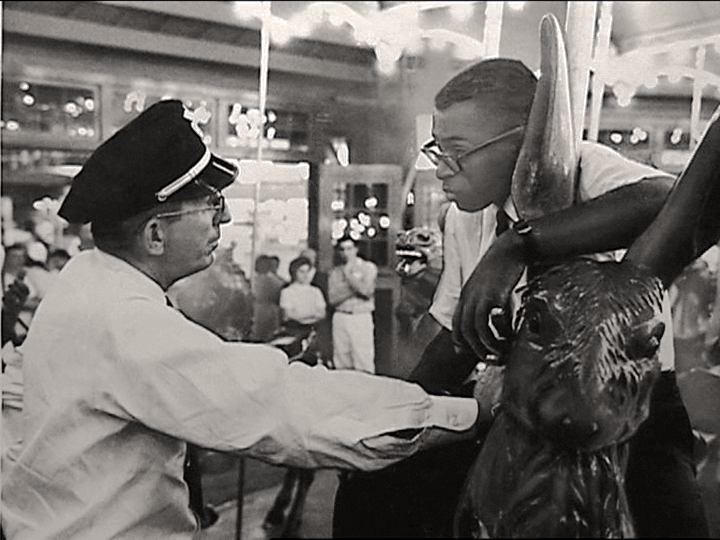What’s a Nice Gerund Like You Doing in a Place Like This?
[ ![][2]][2]
When people ask me who put the “sin in cinema,” I respond, “Kenneth Marcus of Englewood Heights, N.J.” Into their dropped jaws I explain that during the early days of American movies — when Englewood and environs were Hollywood and Broadway rolled into one — Mr. Marcus wanted to lend a sheen of sophistication to his tawdry fare.
He used the German-sounding Kinema, an anagram of “I am Ken,” to advertise his projection house. Shortly thereafter, with a drop in attendance as his patrons feared he had gone too highbrow, he softened the K to a C, introducing “sin to cinema,” thus reassuring his patrons and generations of others. (It was another Jew, Phil Silvers, who put the “Phil” in “Philm.”)
Which fishy tale brings me to a message in a bottle from Mr. Arthur Salmon of Halifax, Nova Scotia. “I have been suffering from shortness of breath, a liking for dill and an embarrassing discoloration of the pupik,” he writes. “Have I been misusing Yiddish grammar?”
Well, Mr. Salmon, judging from your usage of “liking,” I can only say that it seems as though you might, indeed, be suffering from an infectious gerund. Common to only Yiddish and Kawakiwak, a native American language now spoken by a single duck in Appalachia, it was first diagnosed in Europe in the early 19th century, when it wiped out whole populations.
A cure of sorts was developed — using a concoction of locally plentiful buckwheat — by an enlightened Lithuanian nobleman named Kashka Varnishkas, after whom the treatment was named. Previously the buckwheat in that valley had been used as mortar to build cheese houses in which cheese rounds were matured, giving the “kashkavalley,” or “kashkaval” cheese, its distinctive earthy flavor.
My 26-volume Alexander Harkavy Dictionary of English, Yiddish, Hebrew, Aramaic with Extended Appendix on Babylonian Courtly Etiquette points out “caciocavallo,” or “horse’s head,” as an alternative source for the name of the cheese, but, apart from its obviously treyf roots, this equine etymology neglects another entirely elegant construction.
The Hebrew word for cheese, “gvina,” comes from a Biblical hapax logomenon (a word that is used only once). In Job 10:10, the eponym asks rhetorically: “Hast Thou not poured me out as milk, and curdled me like cheese?” The word is used nowhere else, but one of the names for Mount Sinai — Har Gavnunim, Mountain of Peaks — is a cognate.
“Gvina” thus seems to be a gerundive form for the verb “to peak,” or “to stick up,” referring to the appearance of solid masses in the dairy fat.
Cheese, foolishness, gerunds, things sticking up and, as our friend Job reminds us, profound, divinely inspired suffering, all seem to be closely interrelated in Lithuanian Jewish life.
As the saying goes, “Ven der putz shteyt, der seykhl geyt.”
[]: https://forward-hcl50.orc.scoolaid.net/backward-purim/
A message from our Publisher & CEO Rachel Fishman Feddersen

I hope you appreciated this article. Before you go, I’d like to ask you to please support the Forward’s award-winning, nonprofit journalism so that we can be prepared for whatever news 2025 brings.
At a time when other newsrooms are closing or cutting back, the Forward has removed its paywall and invested additional resources to report on the ground from Israel and around the U.S. on the impact of the war, rising antisemitism and polarized discourse.
Readers like you make it all possible. Support our work by becoming a Forward Member and connect with our journalism and your community.
— Rachel Fishman Feddersen, Publisher and CEO






















